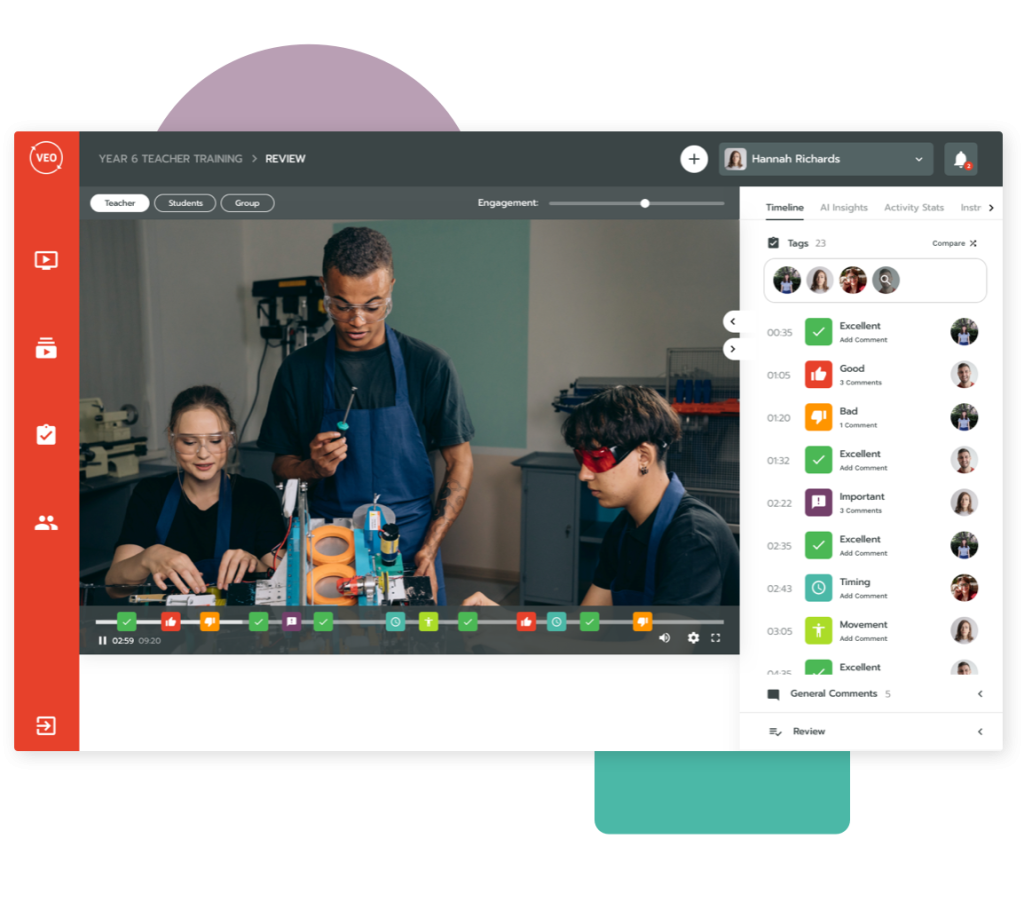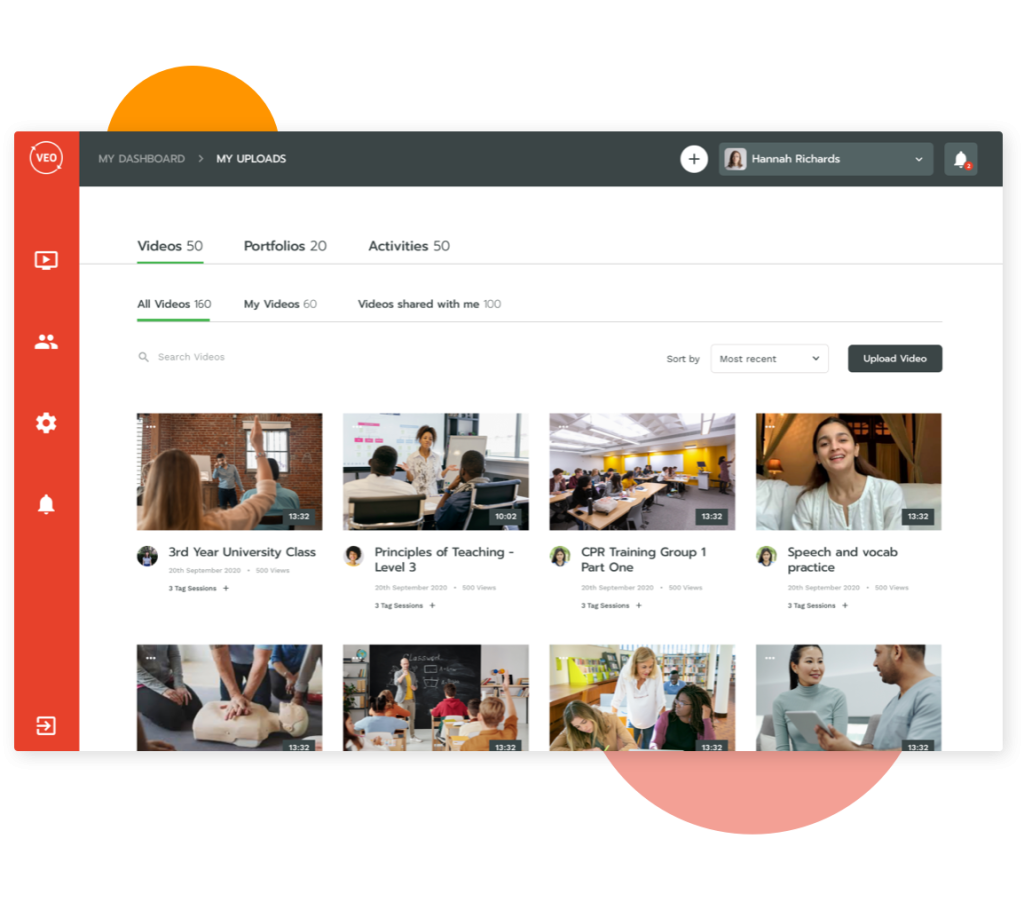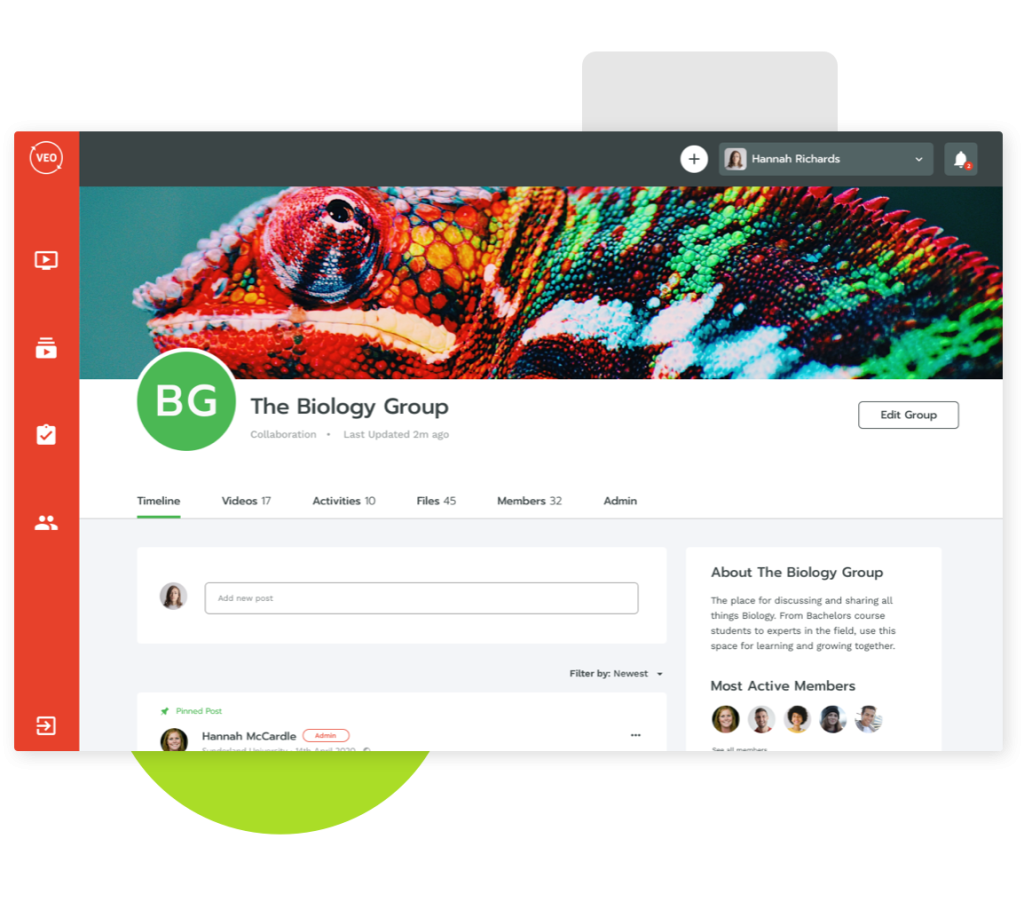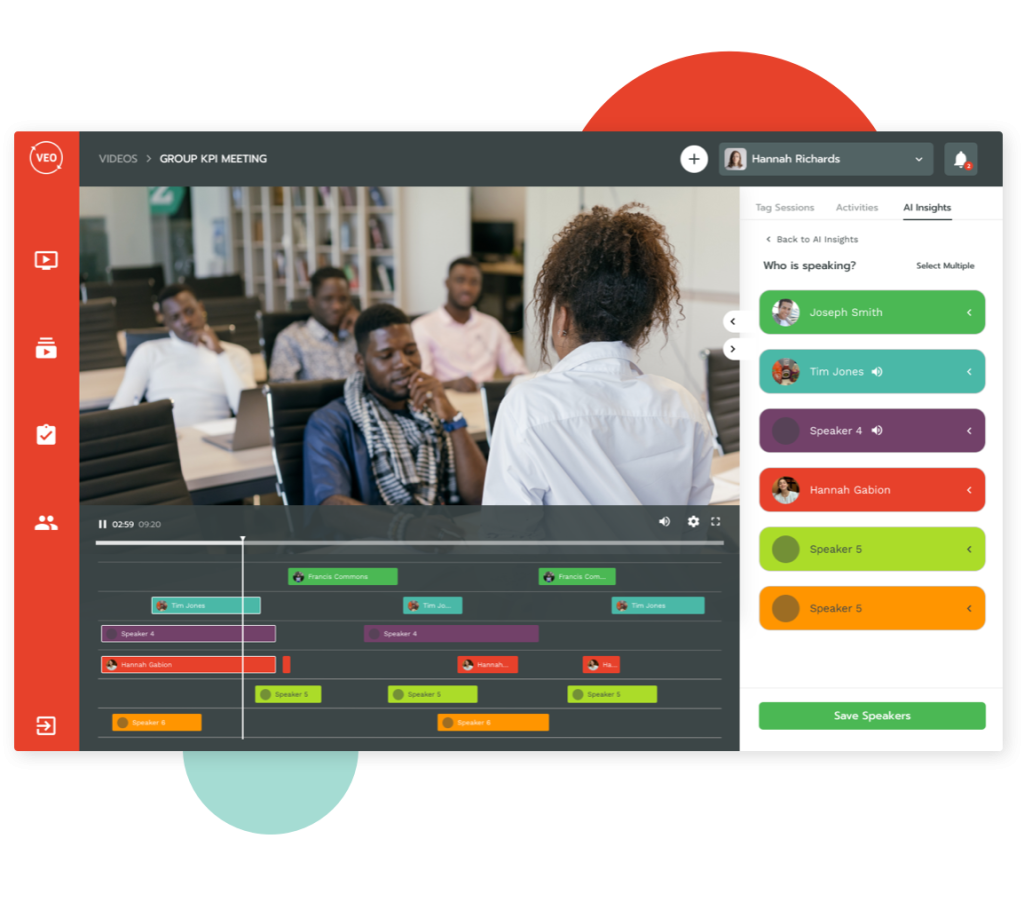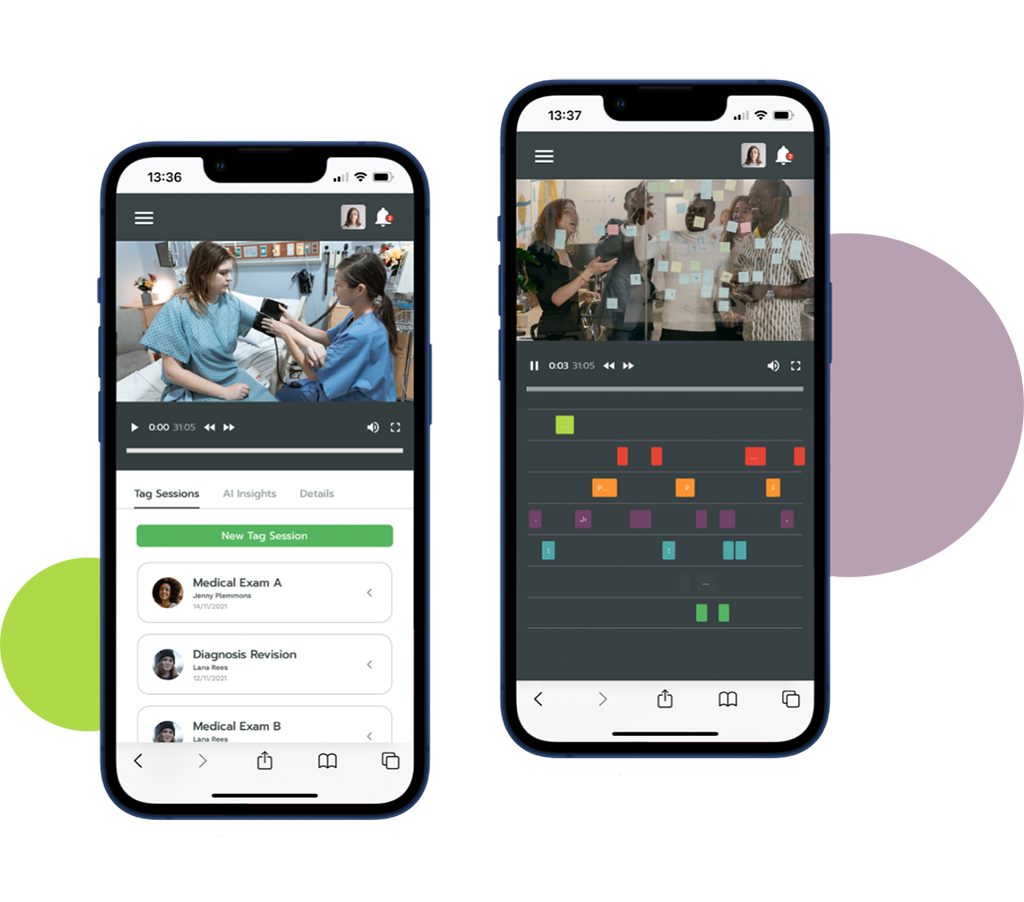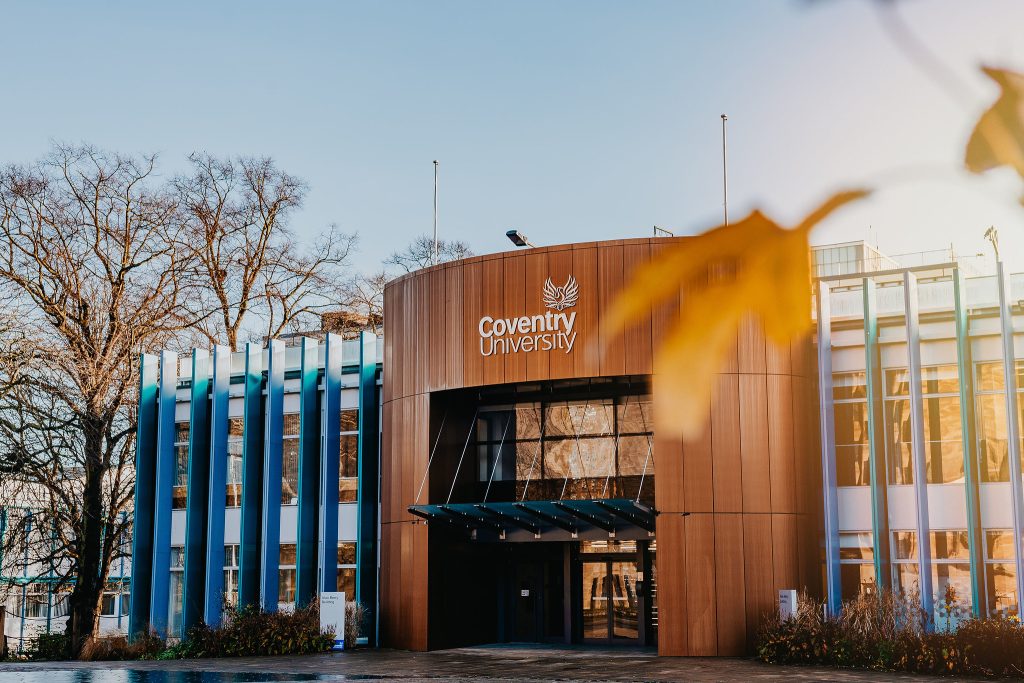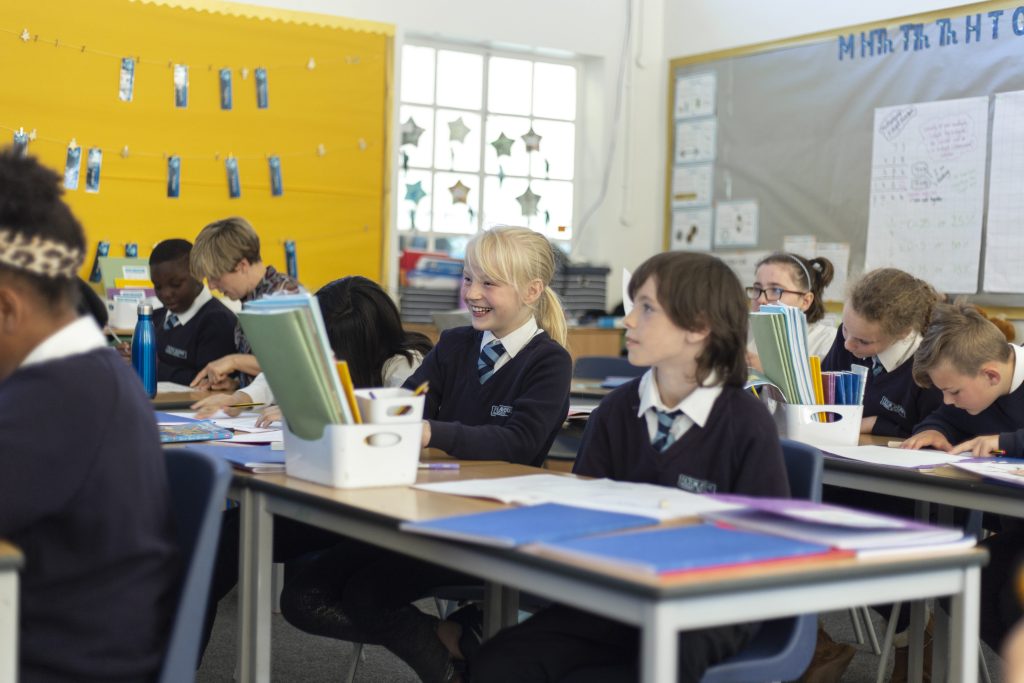
Case Studies Contents:
Enhancing Feedback and Assessment
We spoke to Assistant Professor in Occupational Therapy, Jo Porter, Course Director for Dietetics, Carla Phillips, and Assistant Professor in Simulation, Andy Winter, to find out how VEO has been implemented across campus.
Coventry University is a public research university in Coventry, England offering over 140 undergraduate and postgraduate degrees online and on campus. The university was shortlisted for the University of the Year in The Times and Sunday Times Good University Guide 202. It was also named Joint first Modern University for Careers Prospects in the Guardian University Guide 2022.
Helping students focus
In both Dietetics and Occupational Therapy, communication with patients is incredibly important. Jo and Carla explained that they use VEO as a tool for peer formative exercises and roleplays, as well as for summative assessments. Carla explained how recording roleplay activities helped students focus a lot more on the activity at hand in the first place.
“It really enhances observation in the classroom. When we’re getting students to roleplay with each other, they can get distracted and not get as much value out of the activity as we want. But when they’re recording each other and commenting on the recording, it helps them focus a lot more.”
Jo added that she too has seen students’ focus improve, and give more detail on peer formative activities:
“Before using VEO, students didn’t pay as much attention to detail. They’d give general surface-level feedback but during their real-time progression throughout the recording and conversations, they are able to observe in much more detail and see tangible examples of something we’ve taught in theory being put into practice.”
Andy explained that sometimes students can be disengaged when watching a simulation. Some are taking notes, but others might be on social media.
“When students are using their own phones to record a scenario, or give feedback, they’re having to engage in the moment.”
Andy Winter
Assistant Professor in Simulation, Coventry University
Feedback on summative assessments
When it comes to clinical studies, communication and professionalism are important. Giving feedback in real-time with video evidence can really help students understand what went well and what didn’t. Clara explained,
“It’s really useful for summative assessments as you’re giving feedback in real-time. It’s much more meaningful as you can say ‘did you see what you just did here?’. Then they can go and look back at the videos as and when they need, with comments and tags that remind them how to improve next time.”
“Another behind-the-scenes benefit is that we can share these videos with each other, for instance I can share a video with a student’s personal tutor if they’re struggling with something. It takes two minutes and means their tutor can understand the issue quickly and have the understanding to support them effectively.”
Jo added,
“The ability to create tags that target specific aspects of theory that we want to see demonstrated in practice is one of the most valuable assets of VEO as a means to provide student feedback.”
The opportunity for self-reflection
Jo and Carla noted that having a bank of previous recordings for students to refer back to provides an opportunity for self-reflection. Carla noted:
“Students go back to the videos they’ve recorded if they have a placement coming up, or they’re struggling on a placement. They can reflect and ask themselves ‘I can do this well, why did it go well then?’ or ‘oh yes, I needed to improve on that then, why didn’t I do that?’.
“They look at them not just during the time we’re doing the activities, but they’ve got a bank of them, so they can go back and look. If they’re looking for a certain skill being demonstrated, the tags allow them to find it easily and skip through the video to re-watch the specific bits they need to. Our previous comments are there too, so they can remember exactly what they did well, or what to improve on.”
Speeding up assessment marking
Carla explained that VEO helped speed up the assessment and marking process. It was quite a change from their old process of using a VHS recording or a two-way mirror for peer assessments. Now, assessors can create a tag set with assessment criteria, record the assessment, and tag key moments where they demonstrate a skill, or identify where they could have done more.
Carla explained that VEO helped speed up the assessment and marking process. It was quite a change from their old process of using a VHS recording or a two-way mirror for peer assessments. Now, assessors can create a tag set with assessment criteria, record the assessment, and tag key moments where they demonstrate a skill, or identify where they could have done more.
Jo added that she found that being able to highlight key aspects relating to the learning objectives of modules through the use of tagging sets incredibly helpful.
“We feel from an assessment point of view, it’s much slicker and quicker than what we were doing before. Where recording, marking and moderating used to take two weeks, it now takes us just two days.”
Carla Phillips
Course Director for Dieteics, Coventry Unversity
Future Use
Andy noted that he plans to use VEO to compare and contrast certain situations with his students.
“I’d like to start using it to compare the difference between right and wrong. For example, looking at someone delivering bad news badly, and someone delivering bad news well. I think using it to compare and contrast in this way would be really beneficial.”
